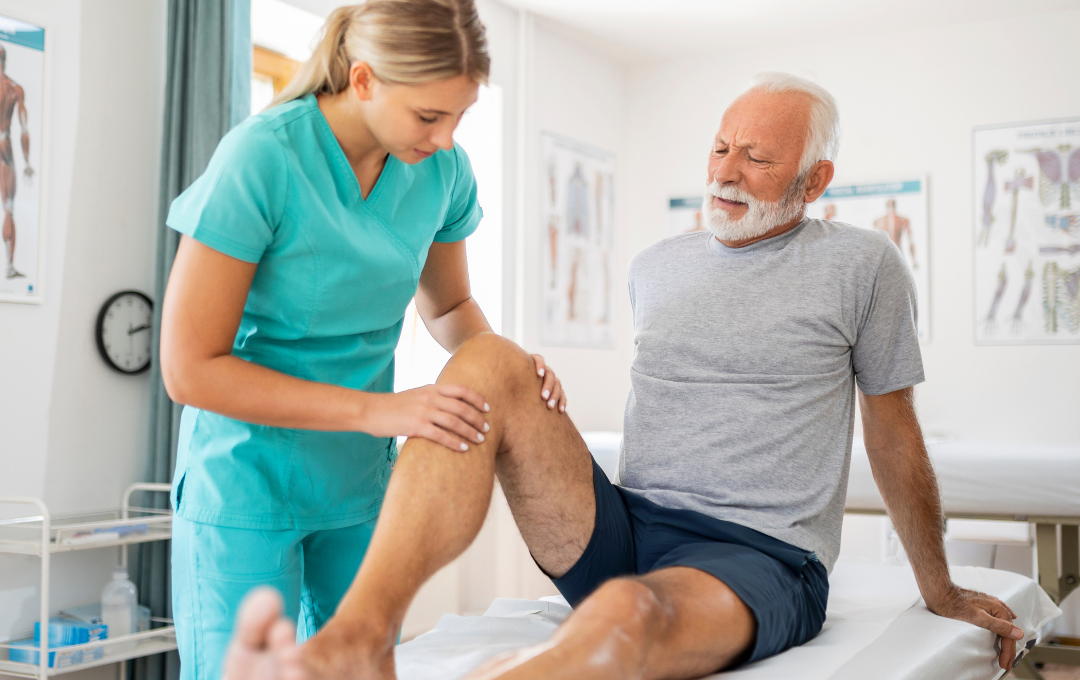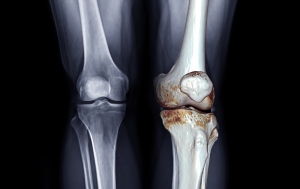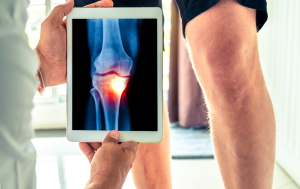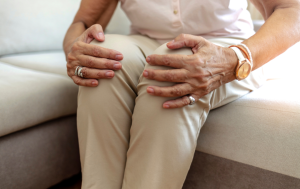
Osteoarthritis (OA) is a common degenerative joint disease that primarily affects the smooth tissue that covers the ends of bones in a joint, known as cartilage. While osteoarthritis can occur in any joint, it most frequently impacts the knees, hips, hands, and spine.
When you think of knee pain, you likely picture it front and center, maybe right on the knee cap. So when you feel pain behind the knee, it’s natural to wonder what’s going on. It can be an unusual and frustrating feeling, but it’s more common than you might think. So, can osteoarthritis (OA) cause pain behind the knee?
While osteoarthritis is known for causing pain directly in the joint, the discomfort can often radiate to other areas, including the back of the knee. Let’s explore why this happens and what you can do about it.
What is Knee Osteoarthritis?
Osteoarthritis is a common type of arthritis that affects millions of people. It occurs when the protective cartilage that cushions the ends of your bones wears down over time. This can cause the bones to rub against each other, leading to a host of unpleasant symptoms. Because your knees are a major weight-bearing joint, they are particularly susceptible to this condition.
Several factors contribute to the development of knee osteoarthritis, such as age, obesity, and genetics. Other contributing factors include joint injuries, repetitive stress from certain activities, and inflammatory conditions. Gender also plays a role, as women are more prone to osteoarthritis, especially after menopause.
Symptoms Of Osteoarthritis Of The Knee
Knee osteoarthritis (OA) often announces itself with pain in the knee, which can flare up when you bear weight, move your leg, or even while you’re at rest. Other symptoms of osteoarthritis of the knee include:
- Stiffness, particularly noticeable after periods of inactivity, like waking up or sitting for a while.
- Swelling or a sensation of puffiness around the knee joint.
- A creaking or grinding sound as you move your knee.
- A feeling of instability, as if your knee might give way or buckle unexpectedly.
- Your knee locking up or getting stuck when you try to bend or straighten it.
What Causes Pain Behind the Knee?
The pain associated with osteoarthritis often manifests in the joint itself, but it can also radiate to surrounding areas. This is why people with knee osteoarthritis might experience pain not just directly in the knee joint, but also behind the knee.
If you have osteoarthritis, that pain behind the knee may be caused by a few different things:
- Referred Pain: Your body has a complex network of nerves. Sometimes, the pain signals originating from the arthritic joint are interpreted by your brain as coming from a different area, like the back of the knee. This phenomenon is known as referred pain.
- Baker’s Cyst (Popliteal Cyst): A Baker’s cyst is a fluid-filled sac that forms behind the knee. When your knee joint is inflamed from osteoarthritis, it can produce excess fluid. This fluid can then collect in a bursa (a small, fluid-filled sac) behind the knee, forming a cyst. A Baker’s cyst can cause pain, tightness, and swelling, especially when you bend or straighten your leg.
- Muscle Strain and Imbalance: Chronic pain and altered movement patterns from OA can lead to muscle imbalances. Muscles around your knee, like your hamstrings or calf muscles, might become tight or strained as they compensate for joint instability. This can contribute to pain and discomfort behind the knee.
- Inflammation: The inflammatory process associated with osteoarthritis can cause swelling and tenderness not only within the joint but also in the surrounding soft tissues at the back of the knee.
- Bone Spurs (Osteophytes): In some cases, bone spurs can develop at the back of the knee joint due to OA. While not always symptomatic, they can sometimes irritate surrounding tissues or nerves, causing pain.
When to Seek Professional Help
While pain behind the knee is often linked to osteoarthritis, it’s important not to ignore it. A proper diagnosis is crucial to rule out other serious conditions, such as a deep vein thrombosis (DVT), a blood clot that requires immediate medical attention.
You should seek professional help if your pain is persistent, worsening, or if you experience any of these symptoms:
- Sudden, severe pain.
- Redness or warmth.
- Fever.
- Inability to bear weight.
- Significant swelling in your calf.
Osteoarthritis Knee Pain Treatment
Osteoarthritis knee pain can be treated through multiple procedures. Some of the conservative treatments often include:
- Physical therapy to strengthen the muscles around the knee and improve flexibility.
- Anti-inflammatory medications to reduce swelling and pain.
- The RICE method (Rest, Ice, Compression, Elevation) to manage flare-ups.
- Injections like corticosteroids to reduce inflammation or hyaluronic acid (visco-supplementation) to lubricate the joint.
- In more severe cases, your doctor may recommend more advanced treatments like Platelet-Rich Plasma (PRP) or stem cell therapy. When conservative methods aren’t enough, surgery is also an option.
- A more effective, non-surgical, minimally invasive treatment called genicular artery embolization helps alleviate chronic knee pain.
How GAE Works
For many people with osteoarthritis, a promising new treatment is gaining attention, known as genicular artery embolization (GAE). This minimally invasive procedure is performed by an interventional radiologist. GAE works by blocking the small arteries that supply blood to the inflamed areas of the knee. By reducing blood flow, it helps to decrease inflammation, which in turn can lead to significant pain relief.
Because GAE is a minimally invasive, outpatient procedure, it offers a great alternative to surgery for some patients. It involves a small incision, has a short recovery period, and can provide long-lasting pain relief.
How USA Pain Centers Can Help
At USA Pain Centers, we specialize in diagnosing and treating the symptoms of osteoarthritis, including pain behind the knee. We offer a comprehensive approach that focuses on your specific needs and can help you determine if GAE is the right option for you. Our team of interventional radiologists is dedicated to providing you with the most effective and minimally invasive solutions possible.
If you’re tired of living with the persistent pain of osteoarthritis, it’s time to take the next step.
Schedule a consultation with us today to learn more about how we can help you find relief.


